We will teach you how to pronounce「りゃ」,「りゅ」, and「りょ」on this page.

I’m Ichiyo and I represent “Ichiyo’s Japanese Online Lesson.”
My job is teaching Japanese to non-native Japanese learners.
| ひらがな (Hiragana) | カタカナ (Katakana) | ローマ字 (Romaji) | 国際音声記号 (IPA) |
| りゃ | リャ | rya | ɾʲa |
| りゅ | リュ | ryu | ɾʲɯ |
| りょ | リョ | ryo | ɾʲo |
IPA = International Phonetic Alphabet
The IPA “ɾ” looks like the English “r.” However, they are different.「りゃ」,「りゅ」, and「りょ」are classified as「拗音」. The literal translation of「拗音」is “sulky sound.” We usually call the small “や/ゆ/よ” as 小さい「や/ゆ/よ」.「小さい」means “small.”
We have seen many non-native Japanese learners who cannot pronounce them correctly. These are the common pronunciation mistakes.
Common mistakes in pronouncing「りゃ」,「りゅ」, and「りょ」
・Pronounce them with the English “R” sound.
・Pronounce them as「や」,「ゆ」and「よ」.
There is no English “R” sound and pronunciation in Japanese. The consonant of「りゃ」,「りゅ」, and「りょ」is “ɾʲ.” It is the same as「り」. If you have not read the following page, please read it before you learn「りゃ」,「りゅ」, and「りょ」. You can also learn the difference between the English “R” and “ら-row.”
How to Pronounce ら・り・る・れ・ろ
Places of Articulation
Before we get to the main point, please learn each part’s name to understand our explanations.
| Vocal Tract Cross-Sectional View | Tongue |
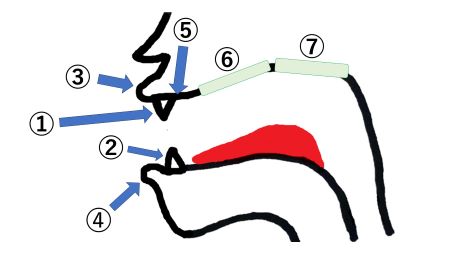 | 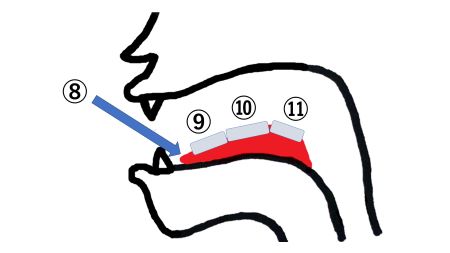 |
| ① upper teeth ② lower teeth ③ upper lip ➃ lower lip ⑤ alveolar ridge ⑥ hard palate ⑦ soft palate | ⑧ tip ⑨ front ⑩ bridge ⑪ back |
How to pronounce「りゃ」,「りゅ」, and「りょ」
「りゃ(リャ)」,「りゅ(リュ)」, and「りょ(リョ)」are composed of two hiragana (katakana) characters. We usually pronounce a hiragana/katakana character in a beat. However, we pronounce「りゃ」,「りゅ」, or「りょ」in a beat even though they are composed of two characters.
Rhythm: We pronounce「りゃ(リャ)」,「りゅ(リュ)」, or「りょ(リョ)」in a beat.
Pronunciation of「りゃ」(Romaji: rya, IPA: ɾʲa)
りゃ = Consonant “ɾʲ” + Vowel “a”
| ① Consonant “ɾʲ” | ||
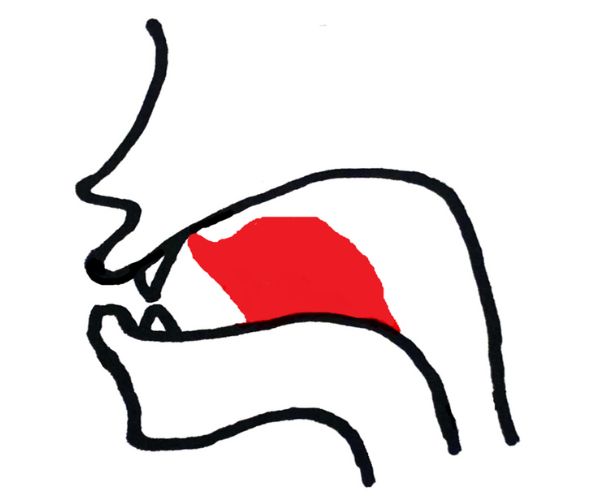 | Tip of tongue: It touches the upper alveolar ridge. Bridge of tongue: It is closer to the hard palate. | |
↓ Move your tongue and mouth, make the sound.
| ② Vowel “a” | |
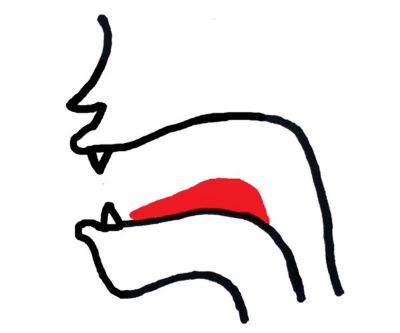 | Tongue: We place our tongue in the lowest position. |
 | Mouth and Lips: We open our mouths wide. |
Pronunciation of「りゅ」(Romaji: ryu, IPA: ɾʲɯ)
りゅ = Consonant “ɾʲ” + Vowel “ɯ”
There are two ways to pronounce of「う」.
The details are here: Pronunciation of Japanese Vowels あ、い、う、え、お
| ① Consonant “ɾʲ” | ||
 | Tip of tongue: It touches the upper alveolar ridge. Bridge of tongue: It is closer to the hard palate. | |
↓ Move your tongue and mouth, make the sound.
| ② Vowel “ɯ” | |
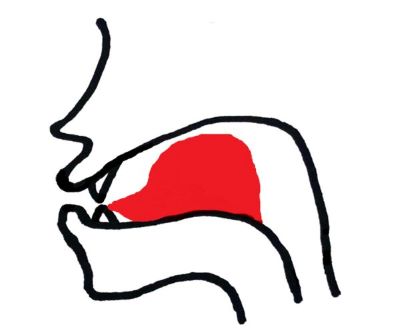 | Tip of tongue: It touches the top and back of our upper teeth. Back of tongue: It is closer to the soft palate. However, compared with the tongue position of「い」, there is much space between the tongue and palates. |
 | Mouth and Lips: We pucker our mouth a little. |
Pronunciation of「りょ」(Romaji: ryo, IPA: ɾʲo)
りゅ = Consonant “ɾʲ” + Vowel “o”
| ① Consonant “ɾʲ” | ||
 | Tip of tongue: It touches the upper alveolar ridge. Bridge of tongue: It is closer to the hard palate. | |
↓ Move your tongue and mouth, make the sound.
| ② Vowel “o” | |
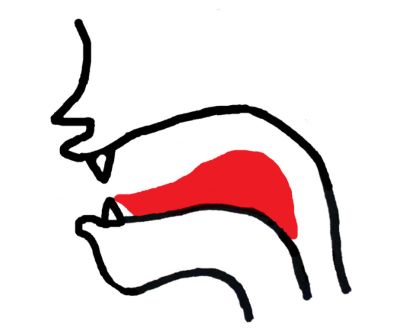 | Front Tongue: It is slightly away from the gums of our lower teeth. Back of Tongue: It is closer to the soft palate. |
 | Mouth and Lips: We round our lips. |
English “R,” “L,” and a Japanese Consonant “ɾʲ”
Many learners pronounce「りゃ」,「りゅ」, and「りょ」by moving their tongues in the same way as the English “R” or “L.” However, it is incorrect.
| English “R” | English “L” | Consonant “ɾʲ” |
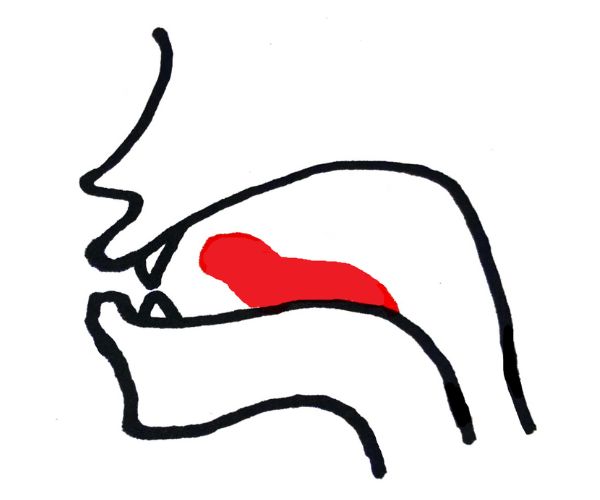 | 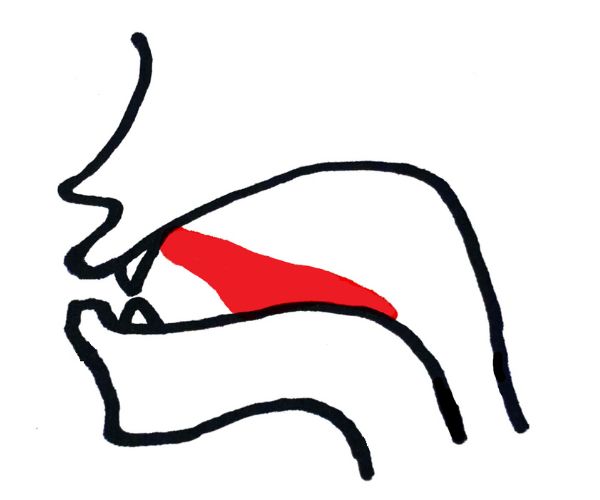 |  |
The consonant of「りゃ」,「りゅ」, and「りょ」is “ɾʲ”
English “R”
The tip of our tongue does not touch anywhere and we pull the tongue straight back.
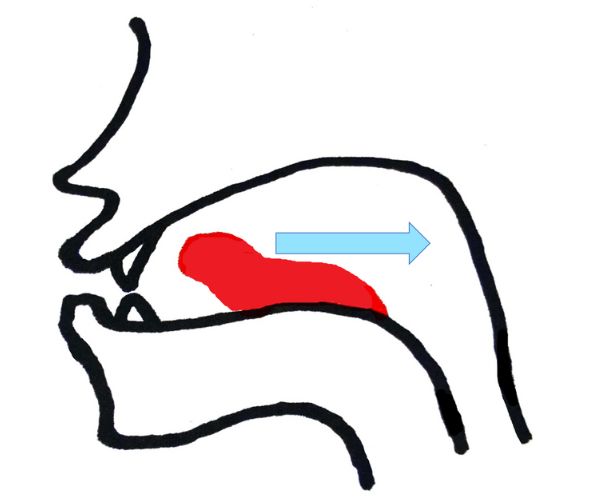
English “L”
The tip of our tongue touches the root of our upper teeth or alveolar ridge.

Japanese Consonant “ɾʲ”
Tip of tongue: It touches the upper alveolar ridge.
Bridge of tongue: It is closer to the hard palate.

The Difference Between「りゃ/りゅ/りょ」and「や/ゆ/よ」
We often see non-native Japanese learners pronounce「りゃ/りゅ/りょ」as「や/ゆ/よ」.
The consonant of「りゃ/りゅ/りょ」is“ɾʲ.”
The consonant of「や/ゆ/よ」is “j.” The sound is not the same as the English “j.”
| Consonant “ɾʲ” りゃ/りゅ/りょ | Consonant “j” や/ゆ/よ |
 | Ⅰ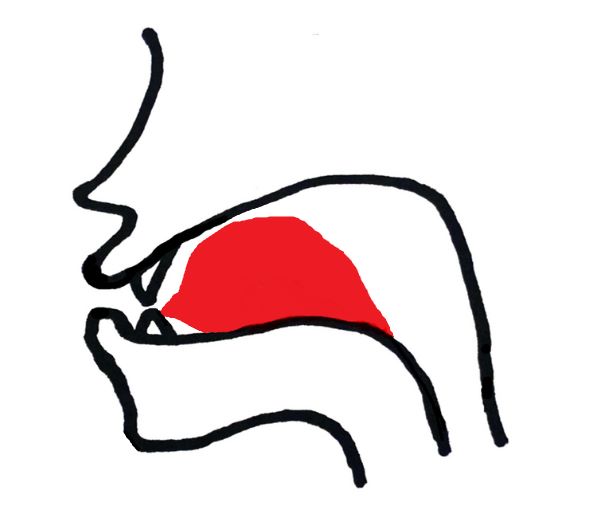 Ⅱ Ⅱ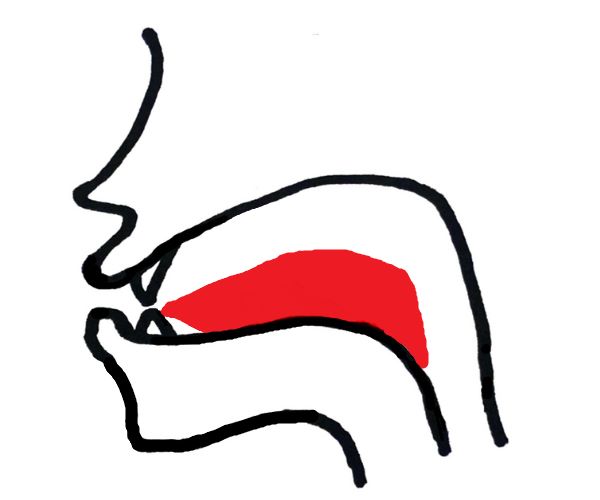 |
| The tip of our tongue touches the upper alveolar ridge. | First, we move our tongue like the image “Ⅰ.” Next, we move our tongue like the image “Ⅱ.” |
Please pay attention to the tongue positions. The details of “や-row” are explained in below:
How to Pronounce や・ゆ・よ
Please try to pronounce these vocabulary.
| Key Word | 略語 | 翻訳 | 略奪 | 役立つ |
| Hiragana | りゃくご | ほんやく | りゃくだつ | やくだつ |
| Romaji | ryakugo | honyaku | ryakudatsu | yakudatsu |
| English Meaning | abbreviation | translation | plunder | be helpful (Verb) |
| Key Word | 隆一 | 雄一 | 琉球 | 有給 |
| Hiragana | りゅういち | ゆういち | りゅうきゅう | ゆうきゅう |
| Romaji | Ryūichi | Yūichi | ryūkyu | yūkyu |
| English Meaning | Ryuichi (Male Name) | Yuichi (Male Name) | Okinawa Prefecture | paid holiday/ paid leave |
| Key Word | 旅行 | 予行 | 有料 | 有用な |
| Hiragana | りょこう | よこう | ゆうりょう | ゆうような |
| Romaji | ryokō | yokō | yūryō | yūyōna |
| English Meaning | trip | rehearsal | paid (Noun) | useful (な-Adjective) |
To Pronounce「りゃ」,「りゅ」, and「りょ」Correctly
When you practice Japanese pronunciation, please do it with a professional Japanese teacher. It is said that it is difficult to listen to and pronounce a second language when our first language does not have the same sound as the second language. Even though you go to a language school, it is difficult to find a teacher who checks your Japanese every time.
Therefore, we provide lessons and services to check and analyze your Japanese every time. We are licensed Japanese teachers. Before you acquire incorrect Japanese, please show us your Japanese.



